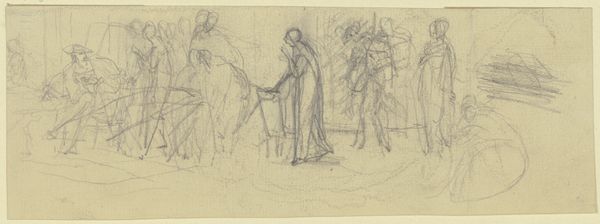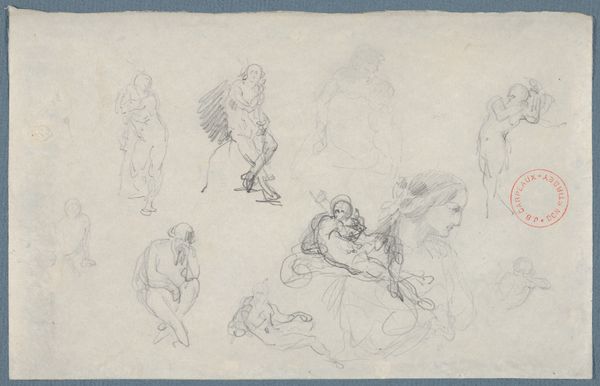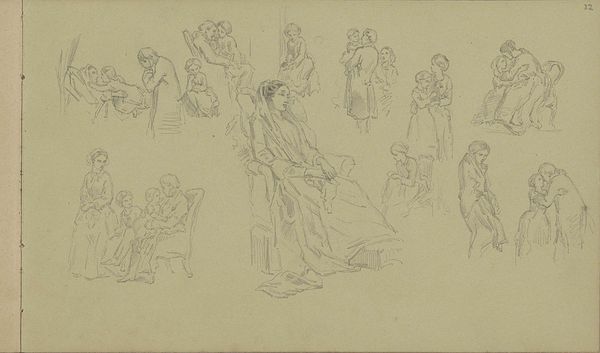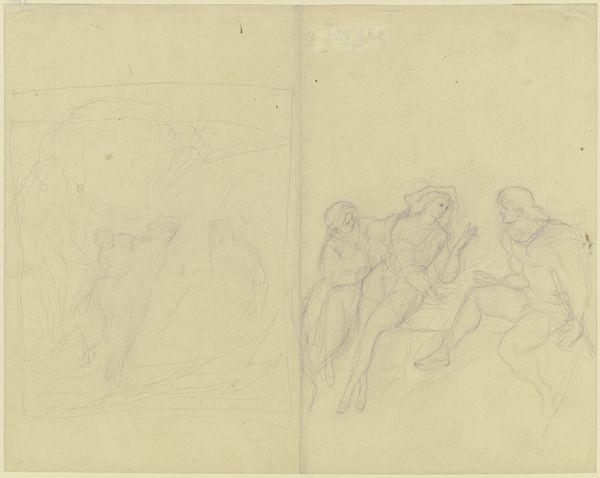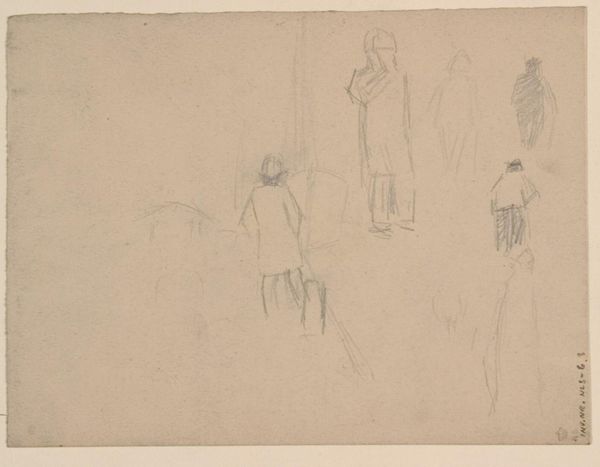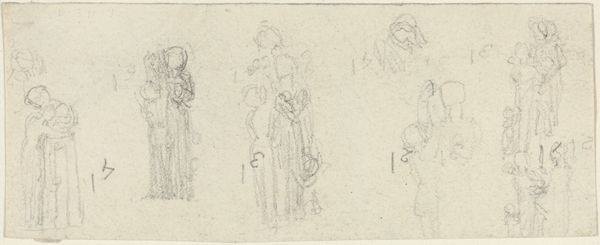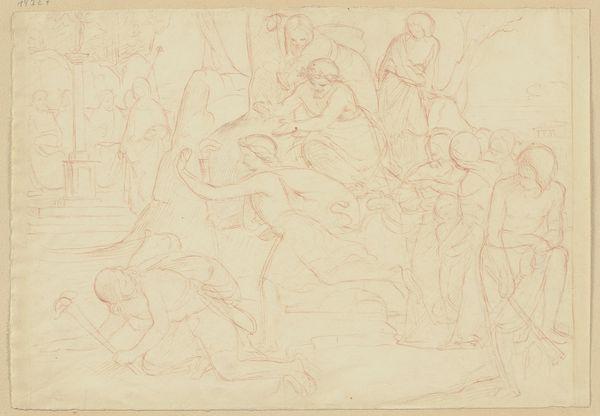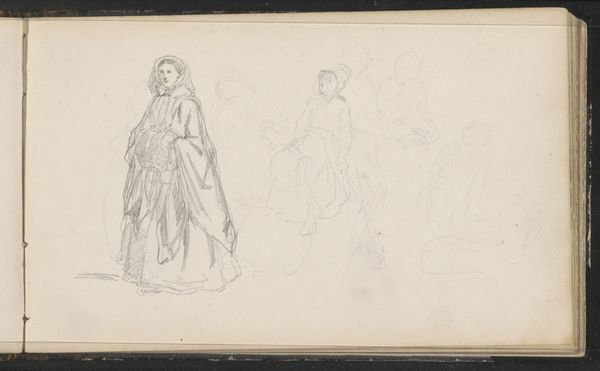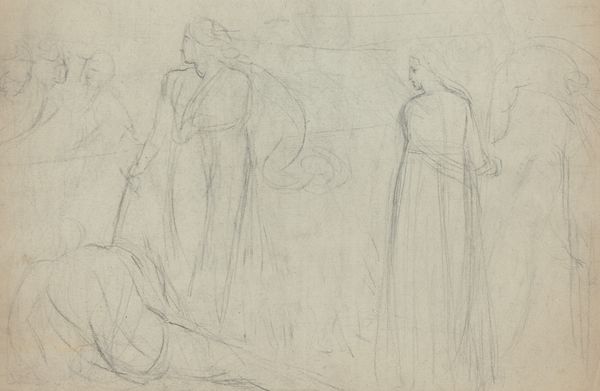
drawing, pencil
#
portrait
#
drawing
#
quirky sketch
#
sketch book
#
incomplete sketchy
#
figuration
#
personal sketchbook
#
idea generation sketch
#
sketchwork
#
pencil
#
sketchbook drawing
#
storyboard and sketchbook work
#
sketchbook art
#
initial sketch
Copyright: Rijks Museum: Open Domain
Curator: Here we have a page titled "Figuurstudies" from a sketchbook by Matthijs Maris. The work dates roughly from 1849 to 1917, and it’s a simple pencil drawing. Editor: Immediately, I'm struck by how raw and intimate it feels. It’s just a fleeting glimpse into the artist's process, a collection of rapidly sketched figures emerging from the page. Curator: Absolutely. Sketchbooks often give us that unfiltered view. Maris appears to be exploring different poses and figures, perhaps studies for larger compositions. There’s a vulnerable quality to seeing this preliminary stage. The lack of polish almost makes them more compelling, wouldn't you agree? Editor: They certainly reveal more about how an artist truly sees the world, stripped away from formal expectations and exhibitionary practices. Notice the recurrent use of figures wrapped in shrouds. Are they emerging or dissolving? I see this and cannot help but to recall the period following the Franco Prussian war which Maris fled, feeling responsible despite not being enlisted. It appears these figures were often ghostly presences for him. Curator: That interpretation opens another rich layer, indeed. One wonders, seeing these forms, what symbols Maris intended with the draping fabric. Perhaps these shrouded forms reflect the societal mourning period that followed conflict, a motif carrying powerful emotional and psychological weight. We know that visual symbols evolve but carry with them continuity in sentiment and the universal expression of loss. Editor: It’s this interplay of art and social history that fascinates me. It allows one to examine how public and personal trauma intertwine within visual culture. Art like this serves not just as personal reflection, but as a vital marker in the timeline of cultural memory. The Rijksmuseum serves not just as a keeper of beauty but of a people’s memory. Curator: Precisely, and it also highlights how sketching itself is such a direct connection to an artist's inner world. We are permitted an invitation into not just the images created, but the artist's method and experience when studying his work. Editor: Ultimately, an artist's legacy often extends beyond finished works, especially in this case where it offers us these rare moments to truly access how the artist thinks and feels within society.
Comments
No comments
Be the first to comment and join the conversation on the ultimate creative platform.

